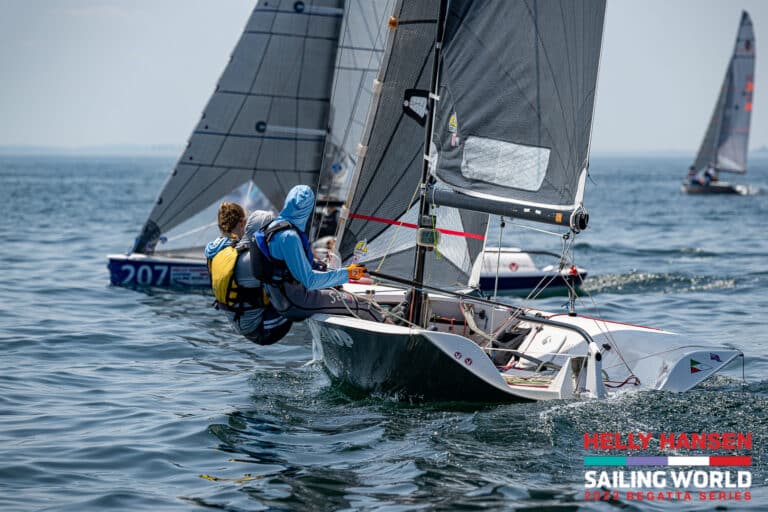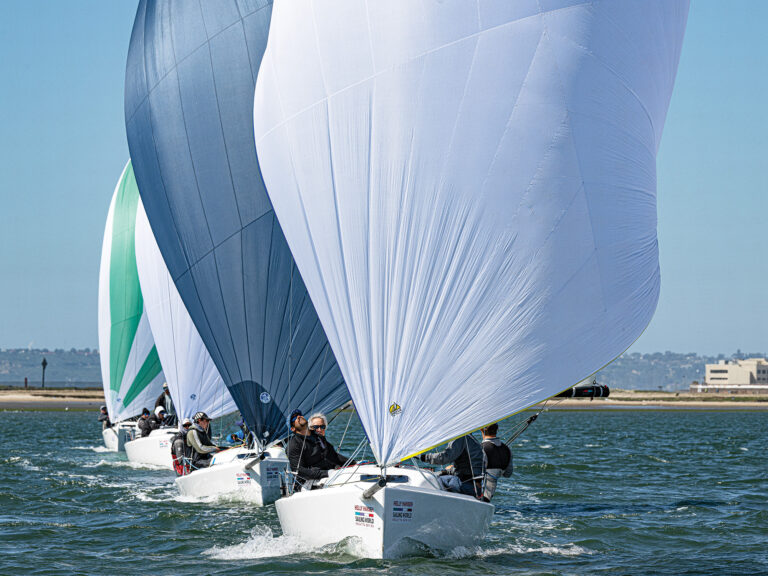
Jobson Report June 2012
I’m fascinated with innovation in our sport. And while I’m all for progress, I also believe that tradition is a core value that needs to be respected. This conflicting dynamic has been at the forefront of my mind since America’s Cup champion Russell Coutts rolled out his master plan for the oldest trophy in sports, a trophy that is dear to me. The America’s Cup has always been about innovation, but the groundwork that’s been laid for the 34th America’s Cup takes bold to an unprecedented level.
I’ve shared my doubts about Russell’s new scheme, but I give him, Larry Ellison, and a lot of others behind the scenes, credit for having the courage to give us a radically different regatta. But for most sailors, such dramatic change is difficult to embrace. Everywhere I’ve been, I’ve heard conflicting opinions about multihulls racing for the Auld Mug. Sentiment ranges from utter disgust to overwhelming enthusiasm, but mostly it’s curious skepticism. As a sailor, and long-time Cup observer, I was uneasy, too, but as it is with life, a single experience can quickly change one’s opinion. My about-face came on the heels of a week of doing live play-by-play (alongside professional catamaran sailor and Olympian Mitch Booth) at the America’s Cup World Series event in Naples, Italy, in April. It made me a believer.
As is the case for most of the professional crews on the America’s Cup World Series teams, catamaran racing is a new genre for me. Everything I know about the Cup is now merely history.
The 45-foot wing-sail catamarans are pint-sized compared to the 72-foot cats, which will race for the Louis Vuitton Cup and the America’s Cup next summer. Coutts and his lead race management team of Ian Murray, John Craig, and Mike Martin realized that new racing rules, challenging course layouts, and an unprecedented regatta format were required to make the America’s Cup compelling. The boats and their wings will be technical marvels, but the core premise of the Cup remains the same—passionate sailors driven to excel. The trophy and the event are the prize for winning. It’s still all about boatspeed.
I’m happy to see that the fundamentals are intact for the Cup Match itself, and I’m excited about what the AC World Series is doing to raise the Cup’s profile. This style of one-design racing keeps the sailing close and interesting. Capsizes are common and races are won and lost because of quick-thinking tactics. With no secrets to hide, the team compounds are open and accessible. I visited each one every morning, and was surprised by the sight of Luna Rossa syndicate head Patrizio Bertelli helping launch his team’s boats on the final day of the regatta.
There are many other elements that differentiate this high-paced AC from those past: there are new commands spoken by the sailors. When the skipper calls to set a downwind sail, for example, the command is a terse, “Deploy!” With sensitive on-board microphones we can listen to the conversations between the helmsman and the tactician. They’re getting better at keeping the language clean.
What’s most remarkable is how physically demanding the AC45 is on the crew. Only five sailors race onboard, and when it’s windy and the seas are rough, as they were in Naples, there’s never a moment’s rest. Setting new sails and maneuvering has to be done in choreographed precision. All five crewmembers are in perpetual motion.
For the 34th Match the boats will start on a short beam reach leg, and then turn downwind toward a gate. We will no longer see the traditional match-race circling during the pre-start, which was ruined when changes to the match-racing rules allowed the “dial-up,” a maneuver that dominated every America’s Cup pre-start in recent memory. In the dial-up, two boats approach from opposite sides of the starting line, and if timed correctly, the starboard tack forces the port-tack boat to luff into the wind. Then they sit motionless. This dial-up tactic took away the elegance of pre-start maneuvering. With two large wing-sailed catamarans, a dial-up is not practical or exciting. As an alternative, a reach-start keeps the boats compacted, at least on the first two legs.
As its evolves, the AC World Series is borrowing from other sports, most notably the concept of a defined field of play. Because it’s impossible to apply any physical boundaries to the water, they’ve developed a virtual boundary system. A yellow light onboard each boat flashes as the boat approaches a boundary. The light flashes faster as the boat gets to the edge of the boundary, and if the boat sails “out of bounds” it’s assessed a penalty. A blue light signifies a boat has received a penalty.
Umpires following the race on computer screens issue penalties for boundary or rules infractions. The offending boat must slow down, and allow its competitors to advance two or more boatlengths, depending on the penalty. Traditional penalty turns would be painfully slow in catamarans, and dangerous, especially when other boats are nearby, so the slow-down system seems fair, and has worked thus far.
The Racing Rules of Sailing have been tailored to the new format. My initial reaction was that changing the rules could be a dangerous precedent. The altered rules, however, make sense after watching the racing closely. For example, when two or more boats get inside the three-boatlength zone before a turning mark, the inside boat, regardless of what tack it is on, is entitled to room. When a boat tacks or jibes, a trailing boat must stay clear. At the boundary, the closest boat is entitled to maneuver back into the center of the course. A trailing boat can’t prevent a boat from maneuvering away from the boundary.
After racing each day, umpires and sailors meet to discuss penalties. The electronic graphics are accurate to less than an inch, so there’s no refuting the evidence. I sat in on a few of these sessions in Naples, and, not surprisingly, the sailors who were sure they were innocent, changed their minds after viewing the precise course they’d sailed. The umpires have the tools to take screen grabs of every moment during an incident.
There are, however, elements of the emerging America’s Cup that must change, first and foremost: the absence of a nationality clause. Coutts has stated nationality requirements is something that would improve the Cup in the future. I wholeheartedly agree.









